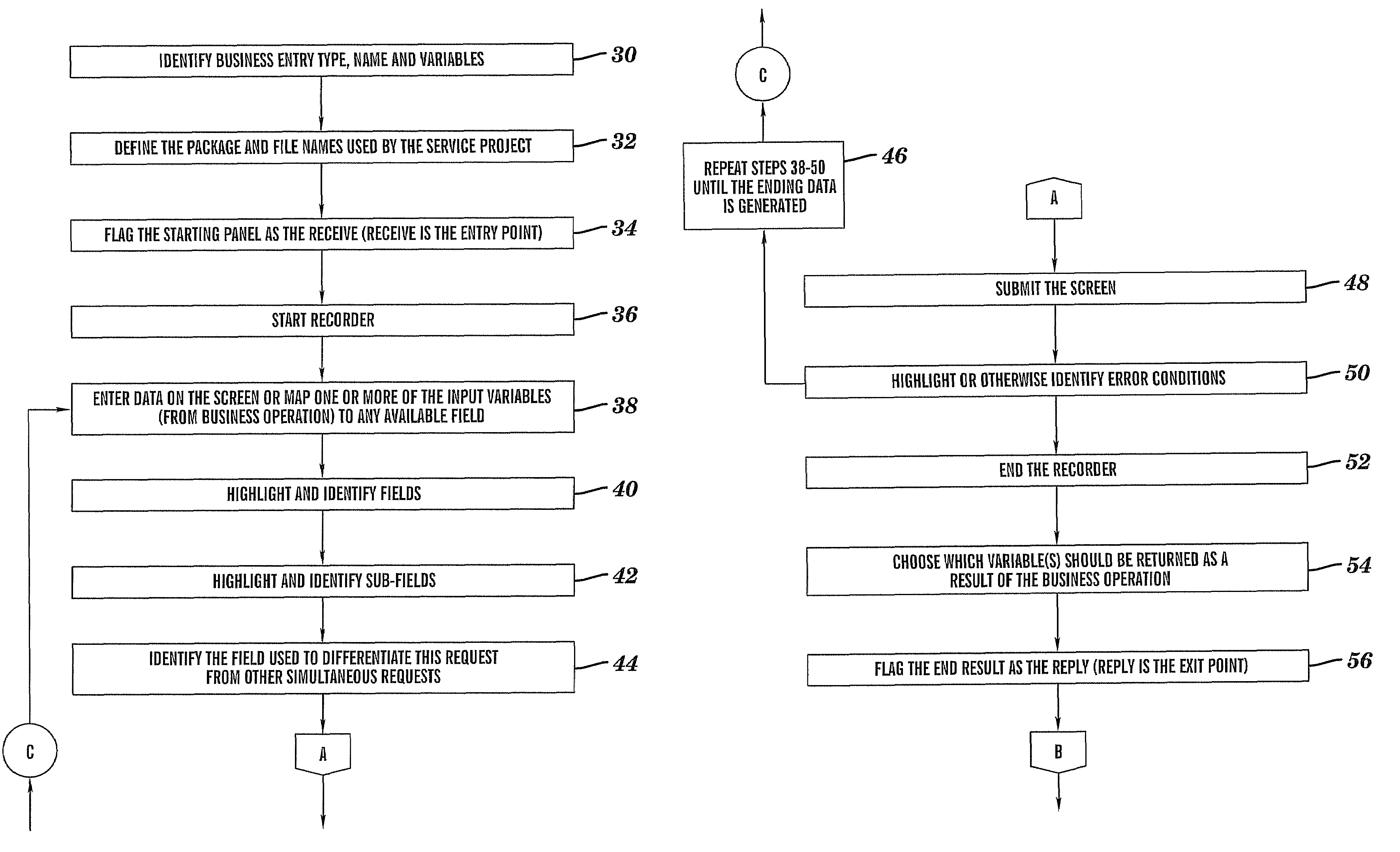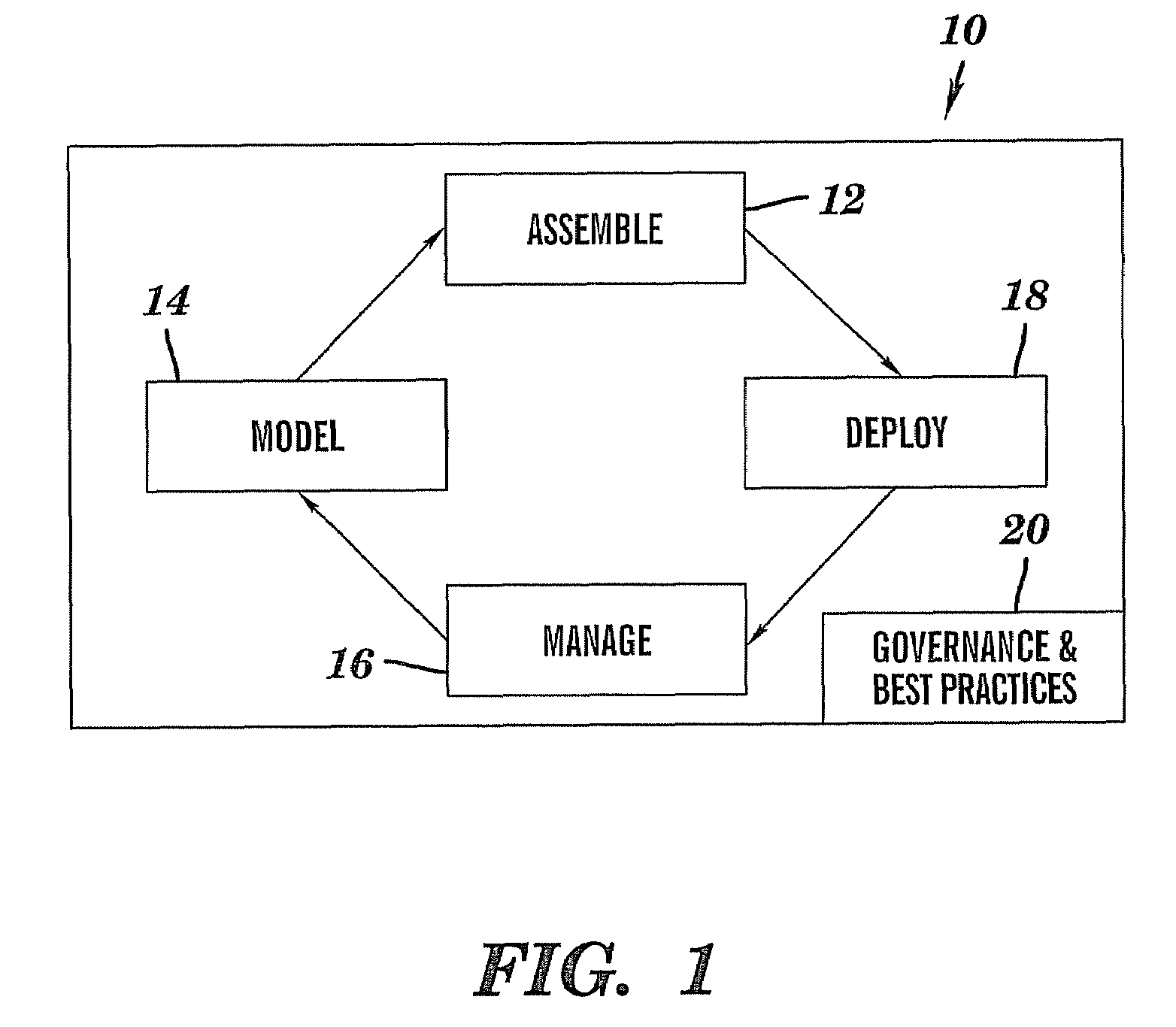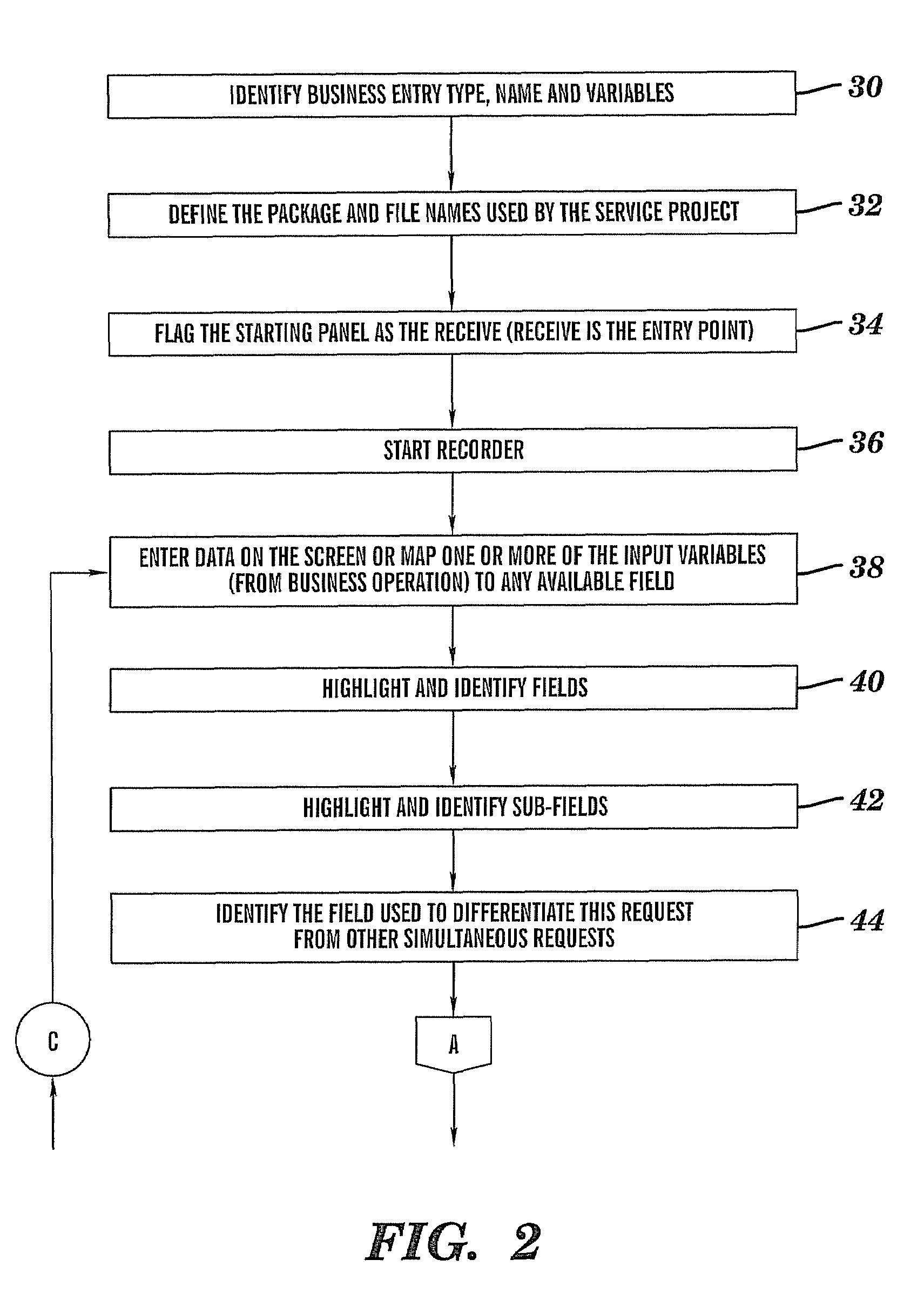Business process execution language (BPEL) application generator for legacy interfaces
a business process and legacy interface technology, applied in the field of legacy systems, can solve the problems of difficult maintenance, expansion, and difficulty in obtaining spare parts for such computer systems, and achieve the effects of improving the maintenance, expanding, and expanding the computer system
- Summary
- Abstract
- Description
- Claims
- Application Information
AI Technical Summary
Benefits of technology
Problems solved by technology
Method used
Image
Examples
Embodiment Construction
[0024]One aspect of the exemplary embodiments is a method for capturing and converting a legacy application into a Business Process Execution Language (BPEL) supporting Service Oriented Architecture (SOA) capabilities.
[0025]Many legacy applications only have terminal interfaces. Typical business operations involve navigating through a series of predictable screens for a series of transactions. There are already many bridging and gateway solutions that allow interacting with these screens. These technologies make it easier for customers to use web browsers with the legacy applications but do not allow bridging modern technologies. Moreover, many legacy “green-screen” applications are process-oriented. The term “legacy application” is used to refer to existing host-based applications, including what are known as “green-screen” applications. These applications continue to be a significant part of the mix of business applications within a company. However, business applications cannot r...
PUM
 Login to View More
Login to View More Abstract
Description
Claims
Application Information
 Login to View More
Login to View More - R&D
- Intellectual Property
- Life Sciences
- Materials
- Tech Scout
- Unparalleled Data Quality
- Higher Quality Content
- 60% Fewer Hallucinations
Browse by: Latest US Patents, China's latest patents, Technical Efficacy Thesaurus, Application Domain, Technology Topic, Popular Technical Reports.
© 2025 PatSnap. All rights reserved.Legal|Privacy policy|Modern Slavery Act Transparency Statement|Sitemap|About US| Contact US: help@patsnap.com



